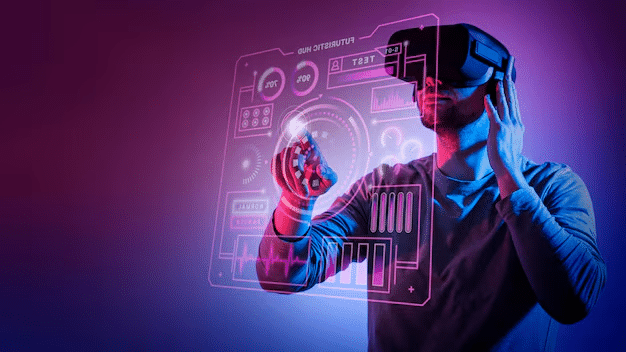Technology has become an essential driver of creativity and innovation, fundamentally transforming how individuals and organizations approach problem-solving, design, and the creation of new ideas. From unlocking new tools for artistic expression to fostering collaboration across global teams, technology has broadened the scope of what’s possible in virtually every domain.
In this article, we’ll explore the ways in which technology influences creativity and innovation, its transformative impact across industries, and the challenges and opportunities it presents.
1. Expanding Creative Tools
Technology provides a vast array of tools that enhance and expand creative possibilities, enabling individuals to bring their ideas to life in ways previously unimaginable.
- Digital Art and Design: Platforms like Adobe Creative Suite and Procreate allow artists to create intricate designs, animations, and illustrations with precision and flexibility.
- Music Production: Tools like GarageBand, FL Studio, and Ableton Live empower musicians to compose, edit, and produce high-quality tracks from their own devices.
- Writing and Publishing: Writing platforms and tools like Scrivener and Grammarly streamline the creative process, while self-publishing platforms like Amazon Kindle Direct Publishing open avenues for authors to reach audiences directly.
2. Fostering Collaboration
Technology has redefined collaboration, breaking down geographical barriers and enabling creative teams to work together seamlessly.
- Virtual Workspaces: Tools like Slack, Microsoft Teams, and Zoom facilitate communication and brainstorming across time zones, making remote collaboration efficient.
- Cloud-Based Platforms: Google Drive and Dropbox enable real-time co-editing and sharing of creative projects, ensuring teams stay aligned.
- Crowdsourcing Innovation: Platforms like Kickstarter and OpenIDEO allow creators to pitch ideas and collaborate with communities to refine and fund their projects.
3. Enabling Rapid Prototyping
Innovators can now test and refine ideas faster than ever, thanks to advancements in prototyping technologies.
- 3D Printing: Designers and engineers use 3D printers to create physical prototypes quickly, reducing development time and costs.
- Software Prototyping: Tools like Figma and Adobe XD allow developers to create interactive app and website prototypes before moving to full-scale production.
- Iterative Testing: Simulations and virtual environments enable testing of ideas and products in controlled settings, minimizing risks.
4. Access to Global Inspiration
Technology connects individuals to a wealth of global resources, ideas, and cultures, fostering innovation through exposure to diverse perspectives.
- Online Platforms: Social media sites like Pinterest, Instagram, and Behance serve as inspiration hubs for creatives in fields such as design, photography, and fashion.
- Open Access to Knowledge: Websites like TED, YouTube, and online course platforms provide insights into cutting-edge innovations and creative practices.
- Cultural Exchange: Technology bridges cultural gaps, enabling cross-cultural collaborations that lead to groundbreaking ideas.
5. Automation of Repetitive Tasks

By automating mundane and repetitive tasks, technology frees up time for individuals to focus on more creative and strategic endeavors.
- Artificial Intelligence (AI): AI tools like DALL-E for image generation and ChatGPT for writing assistance help creators explore new ideas and save time.
- Smart Tools for Productivity: Platforms like Notion and Asana organize workflows, ensuring teams spend less time on logistics and more on creativity.
- Enhanced Editing: Automation in photo editing, video production, and sound design accelerates the creative process.
6. Democratization of Creativity
Technology has made creative tools and platforms accessible to a wider audience, democratizing innovation and empowering individuals who previously lacked access.
- Affordable Software and Hardware: Smartphones, tablets, and affordable editing software enable people from all walks of life to create professional-quality content.
- Social Media Platforms: TikTok, YouTube, and Instagram allow creators to share their work with global audiences and monetize their talent.
- Open Source Communities: Platforms like GitHub and Creative Commons foster open collaboration, allowing creators to build upon each other’s work.
7. Innovation Through Artificial Intelligence
AI is revolutionizing creativity by introducing new ways to generate ideas, solve problems, and explore uncharted territories.
- AI-Generated Art: Platforms like MidJourney and Runway ML create art, music, and videos based on user prompts, pushing the boundaries of traditional creativity.
- Data-Driven Creativity: Marketers and designers use AI to analyze trends and predict consumer preferences, tailoring innovations to audience needs.
- Generative Design: In engineering and architecture, AI-driven tools generate optimized designs based on specific parameters, creating solutions that humans might not conceive.
8. Transforming Traditional Industries
Technology has sparked creativity and innovation in fields ranging from education to healthcare, enabling new approaches to age-old challenges.
- Education: Gamified learning platforms and virtual reality tools make education interactive and immersive, sparking curiosity and creativity among students.
- Healthcare: AI-powered diagnostic tools, telemedicine, and wearable devices encourage innovative ways to deliver healthcare and improve patient outcomes.
- Entertainment: Streaming services, virtual reality gaming, and immersive storytelling redefine how audiences engage with creative content.
9. Bridging Physical and Digital Worlds
Technologies like augmented reality (AR), virtual reality (VR), and the metaverse are blending the physical and digital worlds, creating entirely new canvases for creativity.
- Virtual Experiences: Platforms like Oculus and AltspaceVR allow users to build and explore virtual spaces for entertainment, education, and collaboration.
- AR Applications: AR tools like Spark AR enable creators to develop interactive digital overlays for real-world environments.
- The Metaverse: Emerging metaverse platforms open possibilities for digital art galleries, concerts, and other creative endeavors in virtual spaces.
10. Challenges and Ethical Considerations
While technology drives creativity and innovation, it also raises challenges and ethical concerns.
- Over-Reliance on Technology: Excessive dependence on digital tools can sometimes stifle originality and discourage hands-on creative exploration.
- Digital Fatigue: Constant connectivity and screen time can lead to burnout, impacting mental health and creative output.
- Ethical Concerns: AI-generated content raises questions about authorship, copyright, and potential misuse.
- Access Inequality: Not everyone has equal access to the latest technologies, creating disparities in opportunities for creativity.
Conclusion
Technology has profoundly influenced creativity and innovation, empowering individuals and organizations to push boundaries, solve problems, and explore new frontiers. By expanding access to tools, fostering collaboration, and enabling rapid prototyping, technology has redefined what it means to create. However, navigating challenges such as digital fatigue and ethical concerns is crucial for harnessing its potential responsibly. As technology continues to evolve, its role in shaping the future of creativity and innovation will only grow stronger.
FAQs
1. How does technology enhance creativity?
Technology enhances creativity by providing tools for design, automating repetitive tasks, and enabling access to global resources and inspiration.
2. Can AI replace human creativity?
AI can assist and augment human creativity but cannot fully replace the human imagination and emotional depth behind innovative ideas.
3. What role does technology play in collaboration?
Technology facilitates seamless collaboration through virtual workspaces, cloud-based platforms, and real-time communication tools, breaking down geographical barriers.
4. What are the challenges of relying on technology for creativity?
Challenges include over-reliance on digital tools, ethical concerns about AI-generated content, and unequal access to technology.
5. How does technology democratize creativity?
By making creative tools and platforms more accessible and affordable, technology allows individuals from diverse backgrounds to express themselves and innovate.


